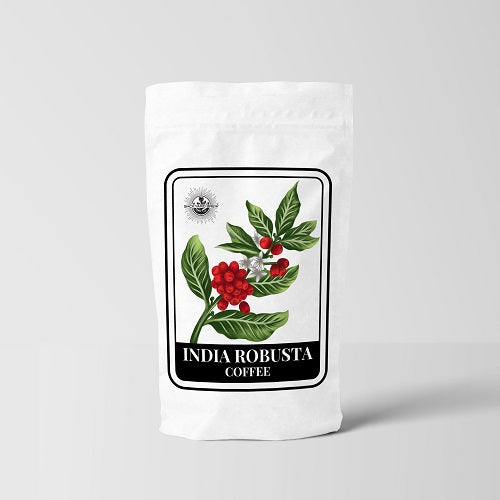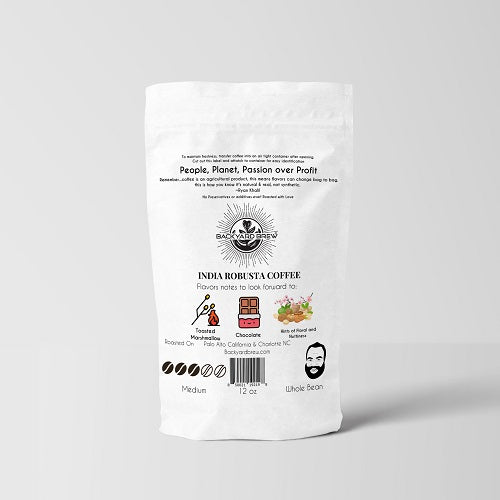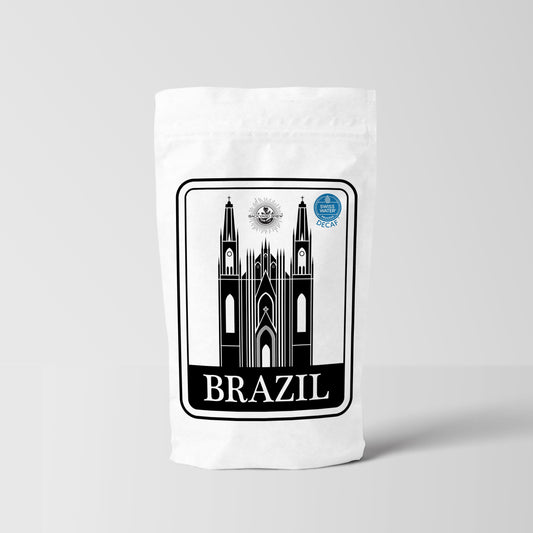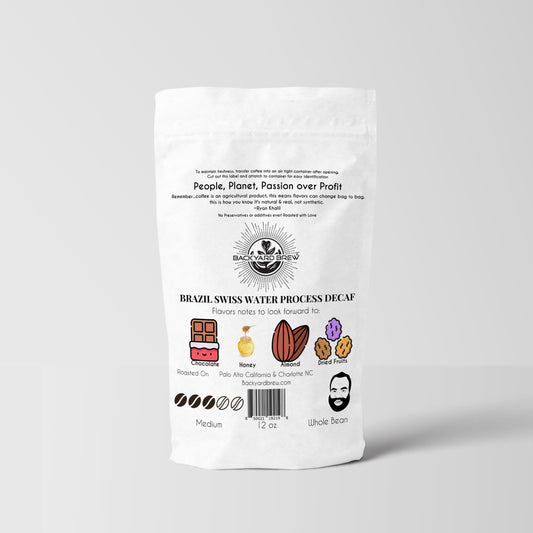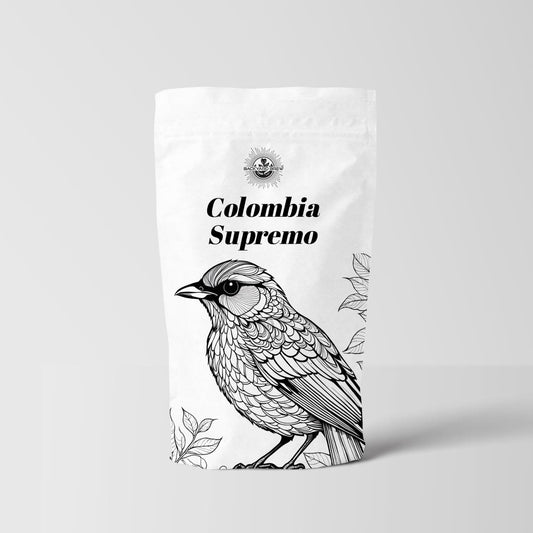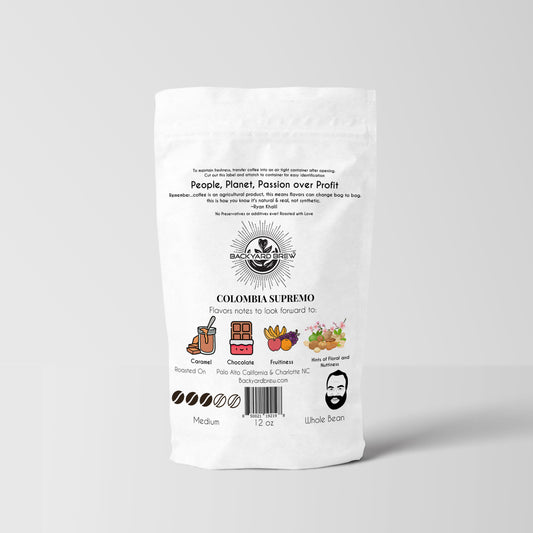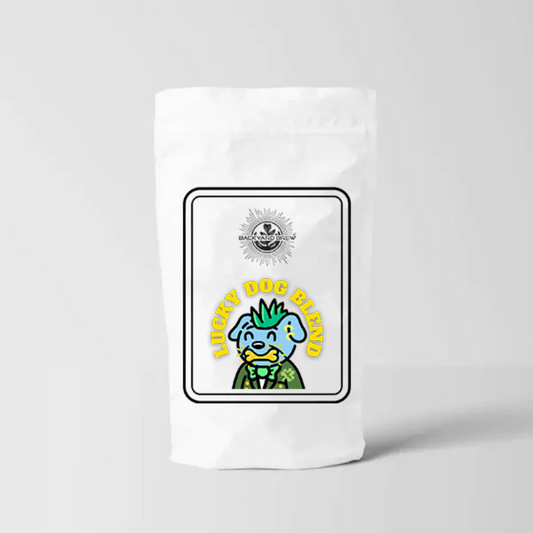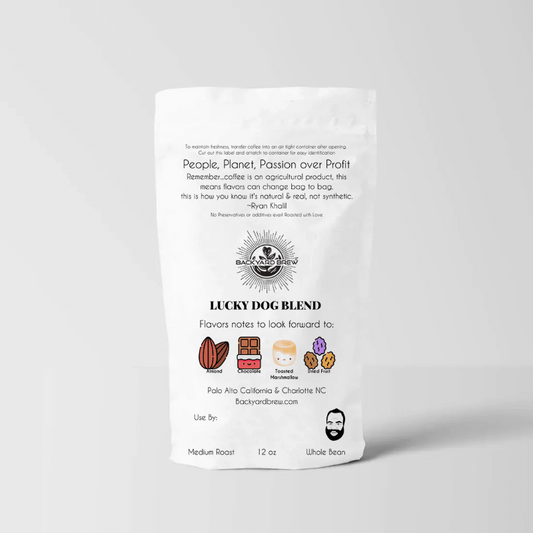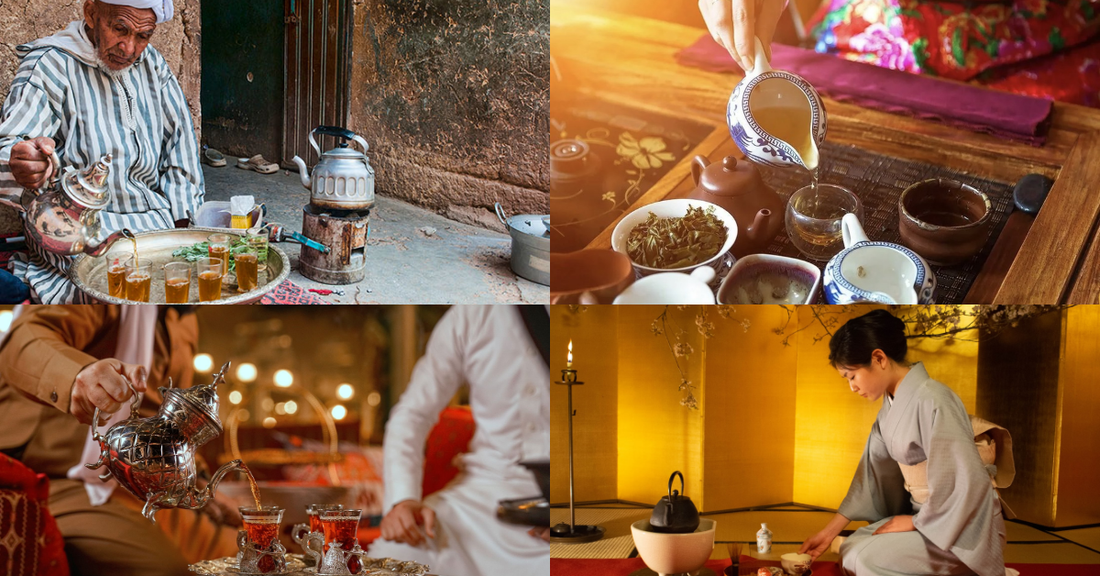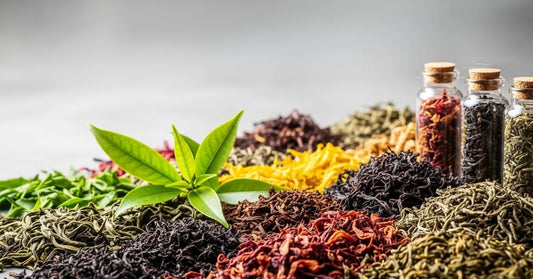Your Guide to All the Tea Ceremonies Around the World
Related Product
Subscribe
Table of Contents
Have you ever wondered how a simple cup of tea can bring people together across cultures? In this blog, we will explore various tea ceremonies around the globe, the types of tea leaves used, and the significance behind each ritual.
According to the Food and Agriculture Organization (FAO), global tea consumption reached approximately 6 million metric tons in 2020, with an expected growth rate of 3% annually.
Tea Ceremonies: A Cultural Connection
Tea ceremonies are not just about drinking tea. They are about connection, mindfulness, and appreciation. Each ceremony has its unique style and significance. Whether it’s a formal gathering or a casual meeting, tea plays a central role in fostering relationships.
|
Country |
Tea Ceremony Name |
Type of Tea Used |
Cultural Significance |
|
Japan |
Chanoyu |
Matcha |
Emphasizes harmony and mindfulness. |
|
China |
Gongfu Tea Ceremony |
Oolong, Pu erh |
Celebrates the art of tea and nature. |
|
United Kingdom |
Afternoon Tea |
Black tea |
A social gathering fostering connections. |
|
Morocco |
Moroccan Mint Tea |
Green tea with mint |
Symbolizes hospitality and generosity. |
|
India |
Chai Ceremony |
Herbal tea (spiced chai) |
A daily ritual that brings families together. |
|
Taiwan |
Bubble Tea Ceremony |
Black, Green tea |
A modern twist on tea culture, popular among youth. |
|
Tibet |
Tibetan Butter Tea |
Black tea |
Provides energy in high altitudes. |
|
Russia |
Samovar Tea Ceremony |
Black tea |
A leisurely social event emphasizing hospitality. |
|
Thailand |
Thai Iced Tea |
Black tea |
A refreshing street food beverage. |
|
South Korea |
Korean Tea Ceremony |
Green tea |
Focuses on aesthetics and respect. |
|
Vietnam |
Vietnamese Tea Ceremony |
Green, Herbal tea |
Reflects hospitality and community spirit. |
1. Japan: Chanoyu
Type of Tea Used: Matcha (powdered green tea)
Key Features
The Japanese tea ceremony, known as Chanoyu, is a highly ritualized practice that emphasizes harmony, respect, purity, and tranquility. The ceremony typically involves the preparation and serving of matcha, a finely ground green tea. The host meticulously prepares the tea, paying attention to every detail, from the selection of utensils to the arrangement of the tea room.
Guests are invited to appreciate the aesthetics of the tea utensils, the surrounding environment, and the act of tea preparation itself. The ceremony often includes a series of movements that are choreographed to create a sense of calm and mindfulness.
Did you know?
Japan produces around 90,000 metric tons of tea annually, with matcha gaining popularity worldwide, leading to a 200% increase in matcha sales in the U.S. over the past five years.
Cultural Significance
Chanoyu is not just about drinking tea; it is a spiritual practice that fosters a deep connection between the host and guests. It reflects the Zen Buddhist principles of mindfulness and appreciation for the present moment. The ceremony is often seen as a way to cultivate inner peace and harmony, making it a cherished tradition in Japanese culture.
2. China: Gongfu Tea Ceremony
Type of Tea Used: Oolong tea, Pu erh tea
Key Features
The Gongfu tea ceremony is a traditional Chinese practice that focuses on the art of brewing tea with precision. The ceremony typically uses high-quality loose leaf teas, such as Oolong or Pu erh. The host employs small teapots and cups, allowing for multiple infusions of the same leaves, which enhances the flavor and aroma of the tea.
The process is slow and deliberate, encouraging guests to savor each sip and appreciate the subtleties of the tea. The host often engages in conversation with guests, creating a warm and inviting atmosphere.
Did you know?
China is the largest producer of tea, accounting for about 40% of the world's total tea production, with over 2.5 million metric tons produced annually.
Cultural Significance
The Gongfu tea ceremony celebrates the beauty of nature and the art of tea-making. It is a way to honor the tea itself and the people who cultivate it. This ceremony is often seen as a form of meditation, promoting mindfulness and connection among participants.
3. United Kingdom: Afternoon Tea
Type of Tea Used: Black tea
Key Features
Afternoon tea is a beloved British tradition that originated in the early 19th century. It typically features a selection of black teas, served alongside an assortment of finger sandwiches, scones with clotted cream and jam, and a variety of pastries. The tea is usually brewed strong and served with milk or lemon.
Afternoon tea is often enjoyed in a social setting, with friends and family gathering to chat and relax. The presentation is key, with elegant table settings and beautifully arranged food.
Fun fact
The tradition of afternoon tea is estimated to have originated in the early 1840s and has since become a staple of British culture, with over 30 million afternoon teas served annually in the UK.
Cultural Significance
Afternoon tea is more than just a meal; it is a social event that fosters connections and conversation. It reflects the British values of hospitality and refinement. The tradition has evolved over the years, becoming a symbol of British culture and a popular activity for tourists.
4. Morocco: Moroccan Mint Tea
Type of Tea Used: Green tea with mint
Key Features
The Moroccan mint tea ceremony is a vibrant and lively event that shows the country’s hospitality. The tea is typically made with green tea, fresh mint leaves, and a generous amount of sugar. The host pours the tea from a height, creating a frothy top, which is both a practical and aesthetic aspect of the ceremony.
The tea is served in small glasses, and it is common for guests to enjoy multiple rounds of tea. The pouring process is often accompanied by conversation and laughter, making it a communal experience.
Fun Fact
In Morocco, it is estimated that the average person consumes about 3.5 kg of green tea per year, with mint tea being a central part of social gatherings.
Cultural Significance
In Morocco, tea is a symbol of hospitality and generosity. The act of serving tea is a way to welcome guests and show respect. The ceremony reflects the importance of community and connection in Moroccan culture, making it a cherished tradition.
5. India: Chai Ceremony
Type of Tea Used: Herbal tea (spiced chai)
Key Features
In India, chai is more than just a beverage; it is a daily ritual that varies from household to household. The preparation of chai typically involves brewing black tea with milk, sugar, and a blend of spices such as cardamom, ginger, and cloves. The tea is often boiled to create a rich and flavorful drink.
Chai is usually served in small cups, and it is common for families to gather around to enjoy this comforting drink. The preparation and sharing of chai often include snacks, making it a social occasion.
Did you know?
India is the second-largest producer of tea, contributing approximately 22% of global tea production, with Assam and Darjeeling being the most famous tea-growing regions.
Cultural Significance
The chai ceremony is a reflection of Indian hospitality and warmth. It is a daily ritual that brings families and friends together, fostering connections and conversations. Chai is often associated with comfort and home, making it an integral part of Indian culture.
6. Taiwan: Bubble Tea Ceremony
Type of Tea Used: Black tea, Green tea
Key Features
Bubble tea, also known as boba tea, originated in Taiwan in the 1980s and has since become a global phenomenon. The tea is typically brewed using black or green tea and is mixed with milk or fruit flavors. The defining feature of bubble tea is the addition of chewy tapioca pearls, which are often served at the bottom of the cup.
The preparation of bubble tea can be customized with various toppings, such as fruit jellies or pudding. The drink is usually served cold and shaken to create a frothy texture. Bubble tea shops often have a casual and vibrant atmosphere, making it a popular choice among young people.
Fun Fact
The global tea market is projected to reach $73.3 billion by 2024, driven by increasing consumer demand for specialty and organic teas.
Cultural Significance
Bubble tea represents a modern twist on traditional tea culture, appealing to a younger generation. It has become a social drink, often enjoyed in groups or during outings. The popularity of bubble tea has led to its global spread, making it a symbol of Taiwanese innovation in the beverage industry.
7. Tibet: Tibetan Butter Tea
Type of Tea Used: Black tea
Key Features
Tibetan butter tea, known as "po cha," is a traditional beverage made from black tea, yak butter, and salt. The tea is brewed strong and then blended with the butter and salt, creating a creamy and savory drink. It is often churned to achieve a frothy consistency.
Tibetan butter tea is typically served warm and is a staple in Tibetan households, especially in high-altitude regions. It is often accompanied by traditional Tibetan bread or snacks.
Fun fact
Studies have shown that regular tea consumption can reduce the risk of heart disease by up to 20% and may lower the risk of certain cancers.
Cultural Significance
In Tibetan culture, butter tea is more than just a drink; it is a source of energy and nourishment, especially in harsh climates. It reflects the nomadic lifestyle of the Tibetan people and their reliance on local ingredients. The tea is often shared among family and friends, symbolizing hospitality and community.
8. Russia: Samovar Tea Ceremony
Type of Tea Used: Black tea
Key Features
The Russian tea ceremony revolves around the use of a samovar, a traditional kettle used to brew tea. The samovar is filled with water and heated over a fire, while a concentrated tea brew is prepared separately. The brewed tea is then diluted with hot water from the samovar before serving.
Tea is typically served with sugar, lemon, and various pastries or sweets. The ceremony is often a leisurely affair, with guests encouraged to take their time and enjoy the experience.
Did you know?
The Fair Trade tea market has grown significantly, with sales increasing by 20% annually, reflecting a growing consumer preference for ethically sourced products.
Cultural Significance
The samovar tea ceremony is a symbol of Russian hospitality and warmth. It is a social event that brings people together, fostering conversation and connection. The tradition reflects the importance of tea in Russian culture, where it is often enjoyed as a daily ritual or during special gatherings.
9. Thailand: Thai Iced Tea
Type of Tea Used: Black tea
Key Features
Thai iced tea is a popular beverage made from strong brewed black tea, sweetened with condensed milk and often flavored with spices such as star anise and tamarind. The tea is typically served over ice, creating a refreshing drink that is perfect for the hot climate.
The preparation of Thai iced tea is often casual, with street vendors serving it in plastic cups. It is a common sight in markets and restaurants, enjoyed by locals and tourists alike.
Fun Fact
Tea ceremonies have become a means of cultural exchange, with over 50 countries hosting tea festivals that celebrate their unique tea traditions and practices.
Cultural Significance
Thai iced tea reflects the vibrant street food culture of Thailand. It is a drink that is enjoyed casually, often accompanying meals or served as a refreshing treat. The beverage has become a symbol of Thai hospitality, showcasing the country’s unique flavors and culinary traditions.
10. South Korea: Korean Tea Ceremony
Type of Tea Used: Green tea
Key Features
The Korean tea ceremony, known as "darye," emphasizes the aesthetics of tea preparation and serving. The ceremony typically features green tea, which is brewed with care and served in beautiful teaware. The process is slow and deliberate, allowing participants to appreciate the flavors and aromas of the tea.
The ceremony often includes traditional Korean sweets and snacks, enhancing the overall experience. The host may also explain the significance of the tea and the utensils used.
Did you know?
Research indicates that engaging in tea ceremonies can reduce stress levels by up to 30%, promoting mindfulness and relaxation.
Cultural Significance
The Korean tea ceremony reflects the values of respect and mindfulness in Korean culture. It is a way to connect with nature and appreciate the beauty of simplicity. The ceremony is often seen as a form of meditation, promoting inner peace and harmony among participants.
11. Vietnam: Vietnamese Tea Ceremony
Type of Tea Used: Green tea, Herbal tea
Key Features
The Vietnamese tea ceremony is often a casual affair, focusing on the enjoyment of tea in a relaxed setting. Green tea is commonly used, and it may be served alongside fresh herbs and fruits, such as jasmine or lotus flowers. The tea is typically brewed in a small teapot and served in tiny cups, allowing guests to savor the aroma and flavor with each sip.
The preparation of tea is often accompanied by traditional snacks, such as rice cakes or dried fruits. The ceremony emphasizes hospitality, with hosts taking great care to ensure that guests feel welcomed and comfortable.
Fun fact
A survey conducted by the Tea Association of the USA found that 80% of tea drinkers believe that sharing tea with friends and family strengthens relationships.
Cultural Significance
In Vietnamese culture, tea is a symbol of hospitality and respect. The act of serving tea is a way to honor guests and strengthen relationships. The tea ceremony reflects the importance of community and connection, making it a cherished tradition in Vietnamese households. It is often practiced during family gatherings, celebrations, and special occasions, reinforcing bonds among family and friends.
The Types of Tea Leaves
Understanding the different types of tea leaves is essential to appreciating tea ceremonies. Each type offers unique flavors and aromas, enhancing the experience.
-
Black Tea: Bold and Robust
Black tea is fully oxidized, giving it a strong flavor. It is often used in British afternoon tea and is known for its rich taste. Popular varieties include Assam and Darjeeling.
-
Green Tea: Fresh and Light
Green tea is minimally processed, preserving its natural flavors. It is commonly used in Japanese tea ceremonies. The delicate taste and health benefits make it a favorite worldwide.
-
Oolong Tea: A Perfect Balance
Oolong tea is partially oxidized, offering a unique flavor profile. It is often used in Chinese tea ceremonies, where the brewing process highlights its complexity.
White Tea: Subtle and Elegant
White tea is the least processed, made from young tea leaves. It has a light, delicate flavor and is often enjoyed for its health benefits.
-
Herbal Tea: A World of Infusions
Herbal tea is not made from traditional tea leaves but from herbs, flowers, and fruits. It offers a variety of flavors and is often caffeine-free, making it a popular choice for relaxation.
-
Pu erh Tea: Aged and Unique
Pu erh tea is fermented and aged, resulting in a rich, earthy flavor. It is often enjoyed in Chinese tea ceremonies and is known for its health benefits.
The Purpose of Tea Ceremonies
Tea ceremonies serve multiple purposes that extend beyond simply enjoying a beverage. They are rich in cultural significance and often embody values, traditions, and social practices unique to each region. Here are some key points that highlight the purpose of tea ceremonies:
1. Cultural Heritage and Tradition
Tea ceremonies are often steeped in history and tradition. They preserve cultural practices that have been passed down through generations. For example, the Japanese tea ceremony (Chanoyu) reflects Zen Buddhist principles and emphasizes aesthetics, mindfulness, and respect for nature. By participating in these ceremonies, individuals connect with their cultural roots and honor their ancestors.
2. Social Connection
One of the primary purposes of tea ceremonies is to foster social connections. Whether it’s a formal gathering in Japan or a casual chai session in India, tea brings people together. The act of sharing tea creates a sense of community and belonging. In many cultures, offering tea to guests is a sign of hospitality and respect, reinforcing social bonds.
3. Mindfulness and Reflection
Tea ceremonies often encourage mindfulness and reflection. The slow, deliberate process of preparing and serving tea allows participants to be present in the moment. This practice can promote relaxation and reduce stress, making tea ceremonies a form of meditation. For instance, the Gongfu tea ceremony in China emphasizes savoring each sip and appreciating the flavors, fostering a deeper connection to the tea and the experience.
4. Artistry and Aesthetics
Many tea ceremonies are an expression of artistry and aesthetics. The selection of tea utensils, the arrangement of the tea setting, and the presentation of the tea itself are all carefully considered. In the Korean tea ceremony (Darye), for example, the beauty of the teaware and the graceful movements of the host are integral to the experience. This focus on aesthetics elevates the act of drinking tea to an art form.
5. Ritual and Ceremony
Tea ceremonies often involve specific rituals and protocols that add to their significance. These rituals can vary widely between cultures but typically include steps that must be followed in a particular order. This structure provides a sense of formality and respect for the process, making the ceremony feel special. For instance, the Moroccan mint tea ceremony includes a specific way of pouring the tea to create a frothy top, which is both a practical and ceremonial act.
6. Celebration of Nature
Tea ceremonies often celebrate the natural world and the ingredients used in the tea. Many cultures emphasize the importance of using high-quality, ethically sourced tea leaves. For example, the emphasis on organic tea farming practices in various ceremonies reflects a commitment to sustainability and respect for the environment. This connection to nature enhances the overall experience and appreciation of tea.
7. Education and Sharing Knowledge
Tea ceremonies can also serve as a platform for education and sharing knowledge about tea. Participants often learn about the different types of tea leaves, brewing techniques, and the cultural significance of the ceremony itself. This educational aspect fosters a deeper appreciation for tea and its role in various cultures.
Conclusion
Each ceremony, whether it’s the Japanese Chanoyu or the British afternoon tea, reflects the values and customs of its people. So, the next time you sip your favorite tea, take a moment to reflect on the journey it has taken to reach your cup. Embrace the traditions, flavors, and connections that tea brings to our lives. Whether you prefer black tea, white tea, oolong tea, herbal tea, or pu erh tea, remember that each cup is a celebration of culture and community. Let’s raise our cups to the global connection through tea!

